Extractions
When does a tooth need to be “pulled?”
Extractions of teeth are recommended when teeth are severely infected, broke or decayed below the gumline, severe gum disease, or if the patient wishes not to invest in the tooth to save it.

How is a tooth pulled?
Dr. Baker will numb the area requiring extraction. Numbing should stop any sharp pain. However, during a tooth extraction you will still be able to feel pushing and pressure sensation. Also, you will hear noise as the tooth is loosened. The tooth will slowly be loosened and removed. Sometimes, the tooth or bone around the tooth may need to be removed with a dental handpiece. This is normal and sometimes the only way to completely extract a tooth.
Are there any risks of dental extractions?
Like any surgical procedure in medicine there are risks. These include injury to nerves, bleeding, bruising, swelling, dry socket, sinus perforation or involvement, infection, fracture of jaw, injury to adjacent teeth or fillings, heart-associated infections, unusual reactions to medicines given or prescribed, and possible reactions to local anesthetic. One way to lessen the likelihood of complications is to not use any drugs including alcohol and marijuana 48 hours prior to your appointment.
Post-Surgery Instructions
- Bite on moist gauze as needed to help stop bleeding. If bleeding does not stop, please call the office.
- Do no eat or drink hot foods today as it may dissolve the blood clot.
- Do not “suck” on the wound socket as it may cause a dry socket. This includes not using straws or smoking for at least 3 days.
- Do not eat hard or crunchy foods that may disrupt the blood clot.
- Avoid or limit physical activity for the 24 hours after extraction.
- If pain persists or worsens, please contact the office. It is normal to have pain as you have a wound that goes to bone level that is healing. There is no magic wand to make an extraction heal pain free.
